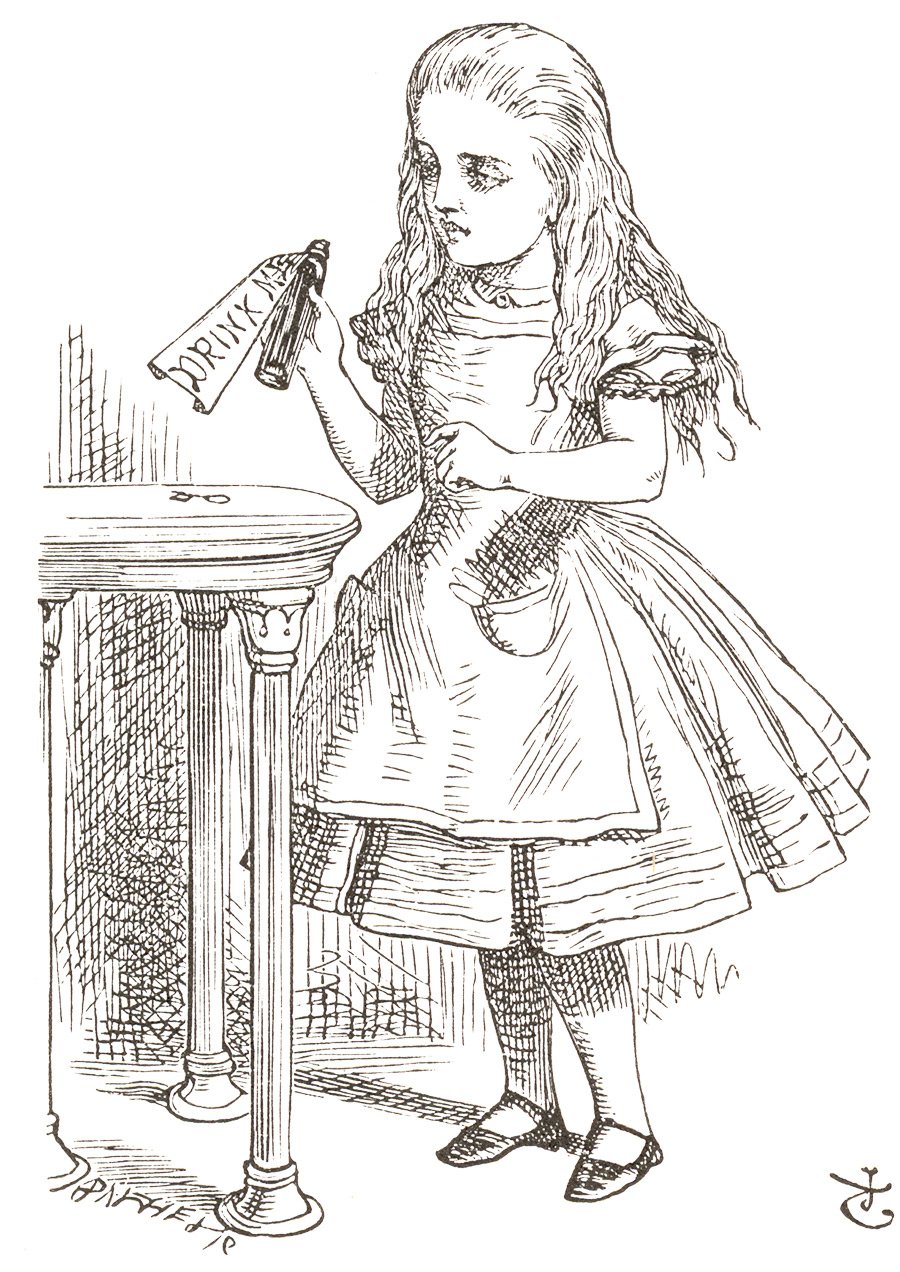
“Who are you?” said the Caterpillar.
This was not an encouraging opening for a conversation. Alice replied, rather shyly, “I - I hardly know, sir, just at present - at least I know who I was when I got up this morning, but I think I must have been changed several times since then.”
Chapter V
While Lewis Carroll exerted so much control over all the editions of his own work, he was encouraging of and receptive to books “of the Alice type”, as he referred to them: stories which imitated Alice, featuring a young child who embarked on an imaginative adventure. (He even had a collection of them in his own library.)
The enduring popularity of the Alice books has led to the frequent use of Carroll’s style, characters, settings, and famous lines for all kinds of reinterpretations, including political satires, humorous parodies, and straightforward imitations. Simply the phrase “Alice in” is an instantly familiar evocation of the story; few works in English literature can claim this kind of universal familiarity.
Lewis Carroll was friends with the Rossettis, and a copy of this book lived in his collection of Alice-like works. Rossetti herself described it as “merely a Christmas trifle, would-be in the Alice style, with an eye to the market”.
Anna M. Richards’s story, in which an American girl named Alice Lee uses knowledge gained from reading Carroll’s Alice to navigate her own adventure in Wonderland, imitates Carroll’s style and Tenniel’s illustrations. The story is both an homage to and a subversive reshaping of Carroll’s creation, with a heroine equipped with the agency and confidence of a turn-of-the- century New Woman.
Tenniel himself wasn’t above parodying his most famous work. This drawing, for the 8 March 1899 issue of Punch, used characters from Alice to mock Speaker of the House of Commons Arthur Balfour’s confused reading of the London Government Act. The caption reads “ ‘What’s the use of repeating that stuff?’ the Mock Turtle interrupted, ‘If you don’t explain as you go on? It’s by far the most confusing thing I’ve ever heard.’”
Alice references and imagery were frequently used in American political satire as well. This “Theodyssey of incidents”, by Evening Post literary editor Simeon Strunsky, offers a gently satirical take on Theodore Roosevelt’s campaign for a third presidential term.
In the 1906 Puck cartoon by J.S. Pughe, “The latest thing in nightmares,” Theodore Roosevelt's Cheshire Cat-like grin can be seen haunting the sleep of the U.S. Senate, who were often hostile towards the President's attempts at Progressive reforms.
Alice is transplanted from Oxford, England to Cambridge, Mass. in the Harvard Lampoon’s retelling of the story. While written to amuse early-20th-century Harvard students, some episodes, such as this one, might be familiar to students a century later: “ ‘Are you coming to my Seminar?’ asked Humpty Dumpty after a pause. ‘A seminar is a place where you can learn in three hours what it takes a Professor three months to teach.’ ”
Horace Wyatt’s wartime reworking of Alice lampooned all things German.
Famously influenced by Alice, James Joyce’s modernist masterpiece also depicts a dreamscape using elaborate wordplay, and repeatedly works in Carrollian characters and allusions, such as “Alicious, twinstreams twinestraines, through alluring glass or alas in jumboland?” and “Wonderlawn’s lost us for ever. Alis, alas, she broke the glass! Liddell lokker through the leafery, ours is mistery of pain.”
This early collection of short stories allowed emerging speculative fiction writer Harlan Ellison to move to Los Angeles, where began writing for television shows such as Star Trek and the Man from U.N.C.L.E., launching a successful career as a writer, screenwriter, and critic.